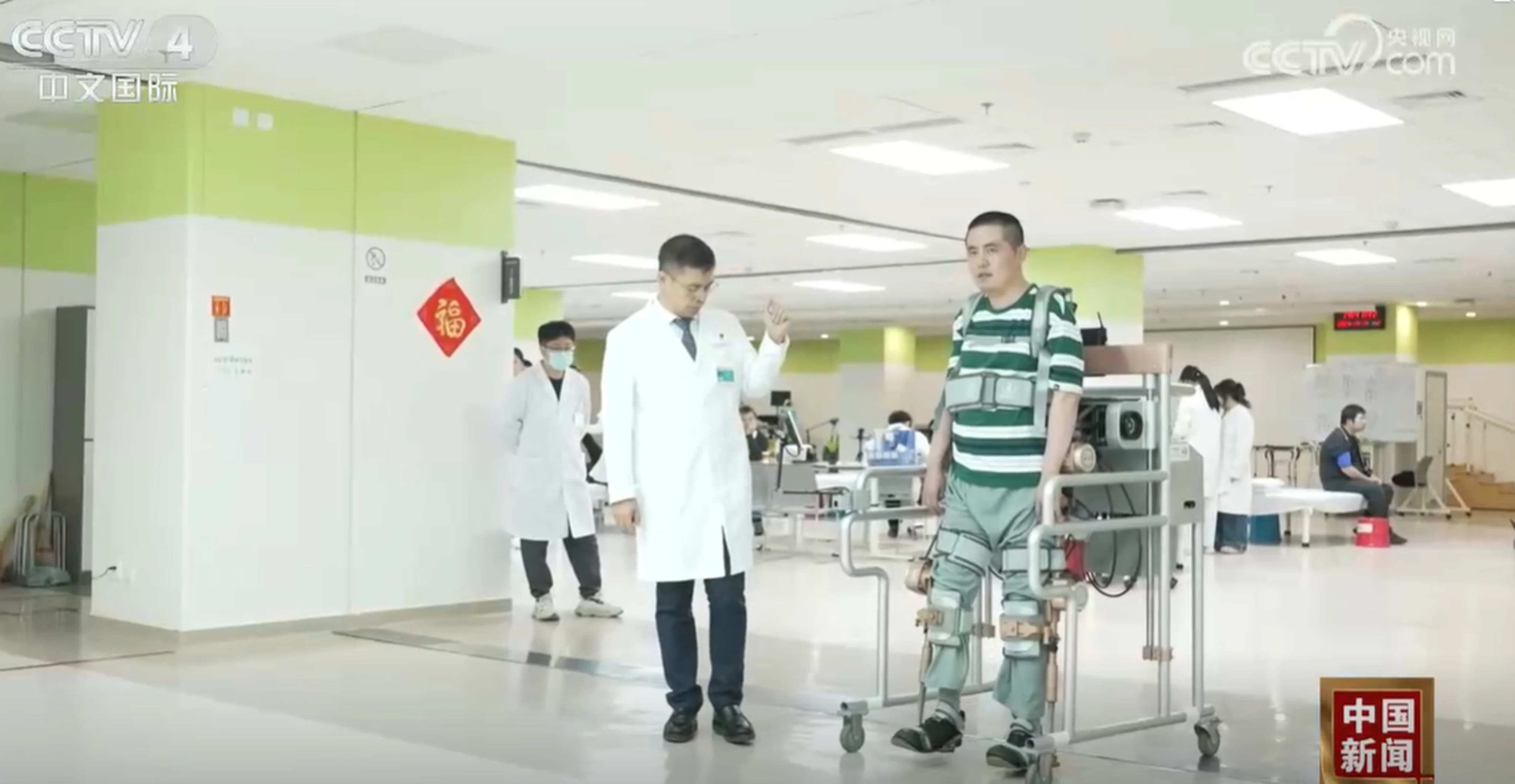Copyright scmp

In the 1987 American action film RoboCop, protagonist Alex Murphy is a police officer in a dystopian 21st-century Detroit when he is mortally wounded and rebuilt by cybernetic enhancements so that he can keep fighting crime. Nearly 40 years on, a Chinese policeman and a team of doctors at Jilin University have turned what once seemed a highly futuristic treatment into an encouraging new reality. Recently, state broadcaster CCTV reported that the Second Hospital of Jilin University earlier this year performed the world’s first spinal interface surgery for quadriplegia – paralysis that affects all four limbs and the torso from the neck down. Nine months after the surgery, the patient was able to stand and walk again with the aid of an exoskeleton robot. He also regained significant upper limb strength. Like the fictional Murphy, the patient, Liu Boqi, is a police officer, working as a traffic officer in Changchun, Jilin province, at the time of his brush with death. On the evening of December 23, 2024, Liu was involved in a serious traffic accident that resulted in a cervical fracture and dislocation. The severe spinal cord injury led to his full paralysis. The trauma caused Liu, now 35, to experience respiratory failure and a complete loss of voluntary limb movement. He was admitted to the Second Hospital of Jilin University for treatment. “With such a severe, complete paralysis injury, traditional treatment would leave the patient bedridden for life,” Dr Wu Minfei said. “Therefore, from the initial surgery, we planned for the possibility of a future spinal interface implant.” Wu, the hospital’s vice-president and director of its spine surgery department, has led a team focused on spinal cord injury repair since 2014 and completed spinal interface implantation experiments involving mice and primates over the past two years. The team implants microelectrode arrays at the injury site. The electrodes can stimulate motor neurons with the aim of paralysed limbs resuming voluntary movement. On January 22 this year, Liu underwent spinal interface implantation. A 56mm (2.2 inches) by 7.5mm electrode was implanted. Before the surgery, Liu had completely lost motor and sensory function below his neck, along with bladder and bowel control. “His injury was at the third cervical vertebra,” Wu said. “Our electrode covers from the third to the seventh cervical vertebrae, enabling the transmission and regulation of electrical signals.” Just six hours after surgery, Wu activated the interface and performed electrophysiological stimulation. The patient’s fingers and toes subsequently exhibited contractions and twitching, indicating the re-establishment of neural signalling. “Liu can now walk independently without an exoskeleton, though his balance remains impaired, making him prone to falling without assistance,” the doctor said. “He currently has grade four muscle strength in his upper limbs,” Wu added, referring to a measurement that means a patient has full range of motion and can activate their muscles against some resistance. Human muscle strength is graded on a scale of zero to five, with five being normal strength. Liu’s grade four rating indicates a remarkable recovery from the complete paralysis at grade zero that he experienced before the intervention. As for Liu, he described spinal cord interface technology as making him “feel like I can stand up again and walk, filling me with hope for the future”, according to CCTV. Nine months since his life-changing surgery, Liu is continuing his rehabilitation. A 2023 study examining the quality of life and challenges faced by spinal cord injury patients in China found there were 3.74 million such patients in the country, with about 90,000 new cases each year. This year, teams from Fudan University’s Zhongshan Hospital and the Second Affiliated Hospital of Zhejiang University School of Medicine reported successful brain-spinal and closed-loop spinal nerve interface surgeries that helped paralysed patients walk. Liu’s case suggests a new level of progress is possible for patients with upper limb and cervical injuries and offers fresh hope for patients whose spinal cord is damaged. Wu of Jilin University observed that while Liu “still has difficulty with fine motor tasks, he has demonstrated significant voluntary movement”.



